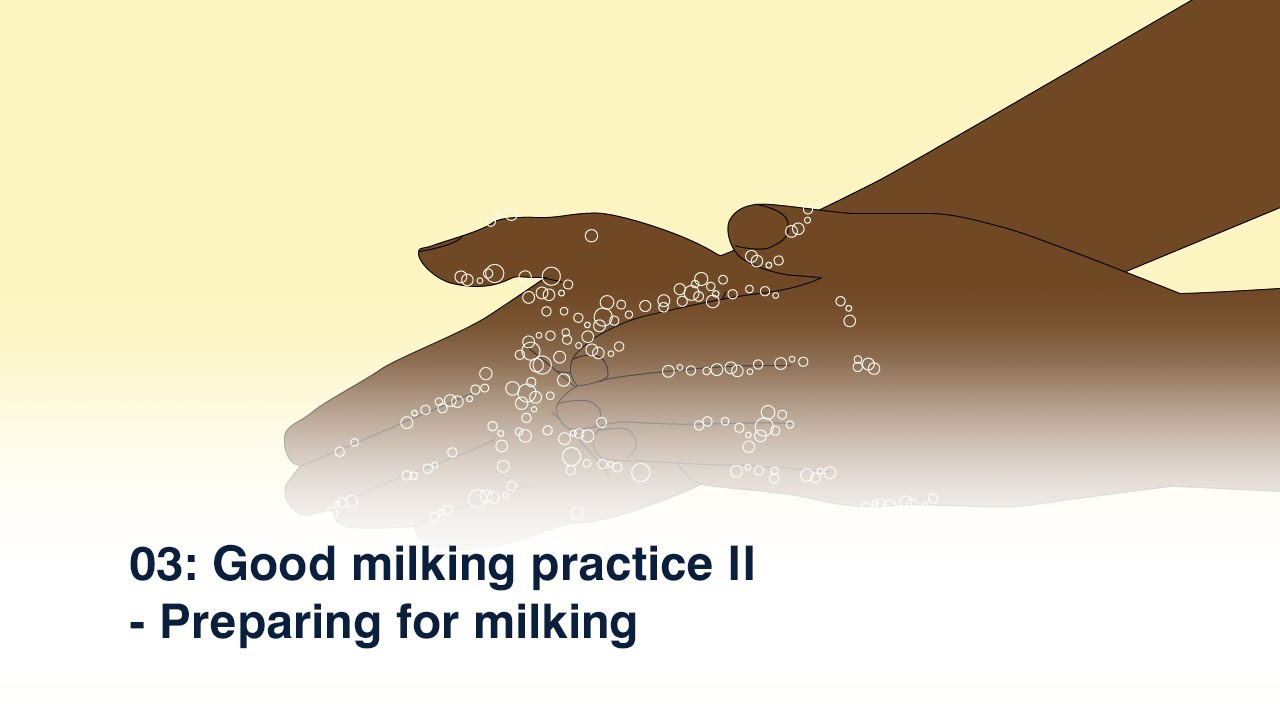Invite to this collection on mastitis in dairy products cows. Offered you by the University of Edinburgh. This video clip is excellent bleeding method 2 –
preparing for bleeding. Mastitis is the infection of the milk generating gland,
the breast. Bacteria invade the teat end through the teat
canal and trigger an infection. Mastitis is a battle in between microorganisms invading
the udder and the cow combating the infection. It is essential not to take infectious mastitis
bacteria from cow to cow, by fabrics or hands. Milkers should wash and completely dry hands
before beginning to milk and wash and completely dry hands in between cows. Ideal technique is to put on nitrile handwear covers that
are quickly cleaned.The health and wellness of
milker and employees taking care of
milk, is of significant value. The milker ought to be healthy, tidy, have
brief and clean finger nails and use tidy garments. They must bleed the cow paying full attention
to the task and not smoke, spit or cough while milking. The cow needs to be milked as swiftly and
entirely as feasible, and ideally constantly milked by the exact same person. By calm and gentle handling,
touching the cow, talking with her and keeping regular activities during milking,
she will feel at simplicity. Bacteria live in the cracks and sores of skin,
so good hand hygiene and preventing dry and chapped skin on hands and teats is important.The use udder
salve on teats and hands will certainly help to keep skin
healthy and balanced with a reduced microbial count. The udder needs to be cleaned up prior to milking to get rid of dirt and dust that might otherwise contaminate the milk. It also stimulates the cow to allow down her milk. – Either utilize a pre-dip to clean the teat. – Or 4 edges of a damp fabric need to be utilized to clean the 4 quarters. The cloth must not be gone back to the pail. – A dry towel or paper ought to be used to dry the quarters prior to bleeding. – Moist can leave a drip on the teat end that will certainly either end up in the teat causing mastitis or in the milk leading to a shortened shelf life.So there
must be 2 colour co-ordinated or labelled towels for each and every cow: one for washing and one for drying. 2 fabrics per cow are required for each and every milking. The towels must be cleaned and dried out in between milking. If you milk two times a day, a minimum of 4 fabrics per cow is needed.
Welcome to this series on mastitis in dairy products cows. This video clip is excellent bleeding technique 2 –
It additionally promotes the cow to allow down her milk. 2 cloths per cow are required for each milking. The towels should be washed and dried in between milking.

